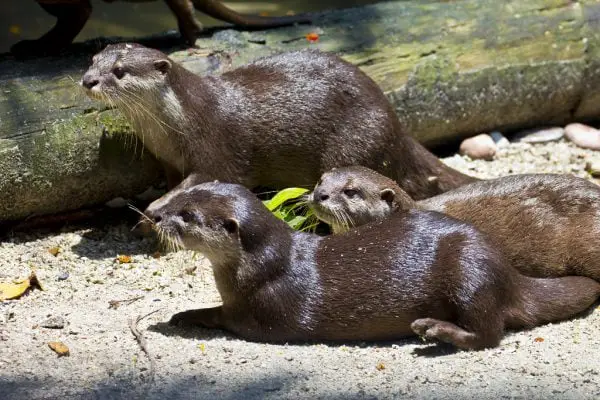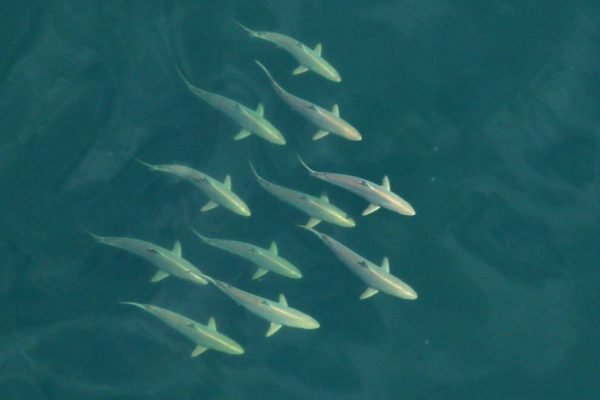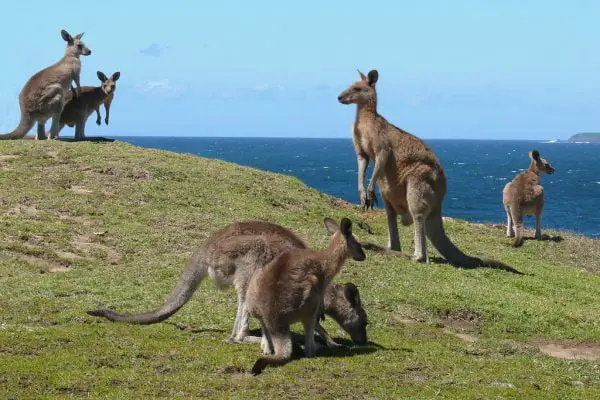Towering over their forest homes with majestic antlers and a formidable presence, moose have captivated humans for centuries. These gentle giants, with their distinctive features and impressive size, play a vital role in the ecological tapestry of northern forests. But beyond their physical characteristics and ecological significance, the world of moose holds a hidden layer of intrigue – the language used to describe groups of these remarkable creatures. Let’s embark on a journey through this vocabulary, exploring the collective nouns associated with moose and delving into the fascinating facts that continue to make them a source of wonder and respect.
Collective Nouns for Moose
Unlike some animals with singular collective nouns, moose boast a diverse vocabulary, each term reflecting the specific behavior or context of the group:
- Herd: This term evokes the image of a large and cohesive group of moose, often traveling together or grazing peacefully in a meadow. It suggests a sense of community, shared purpose, and the collective movement of these magnificent animals across the landscape.
Example: As the sun peeked through the canopy of the boreal forest, a herd of moose emerged from the trees, their long legs carrying them gracefully across the dew-covered meadow, their powerful bodies silhouetted against the rising sun.
- Crash: This term, while seemingly dramatic, describes a group of moose running together, often in response to a perceived threat or in a sudden burst of energy. It captures the dynamism and urgency of their movement, highlighting their powerful hooves and impressive speed.
Example: Alerted by the distant sound of approaching vehicles, a crash of moose erupted from the undergrowth, their massive bodies crashing through the underbrush as they fled for safety, leaving a trail of broken branches and disturbed leaves in their wake.
- Gang: This informal term portrays a group of moose, often younger individuals, spending time together in a casual and playful manner. It suggests a sense of camaraderie and social interaction within this specific age group, showcasing their playful nature and social bonds.
Example: As the afternoon sun dappled the forest floor, a gang of young moose frolicked in a sunlit clearing, their playful sparring and playful chases a display of their developing strength and social dynamics.
- Mob: This term, carrying a slightly negative connotation, refers to a group of moose engaged in competition or conflict, often over access to food, mates, or territory. It highlights the competitive nature of these animals and the potential aggression displayed during breeding season or resource scarcity.
Example: During the rut, a mob of bull moose clashed antlers in a fierce display of dominance, their powerful bodies locked in combat as they vied for the right to mate with the waiting females, showcasing the competitive nature that drives their reproductive success.
Fascinating Facts About Moose
Understanding collective nouns enriches our vocabulary and adds a deeper layer of appreciation for the unique characteristics of these creatures. But venturing deeper into the world of moose reveals their remarkable adaptations, ecological significance, and the complex relationship they share with humans:
Masters of Adaptation: Moose have evolved impressive physical adaptations to survive the harsh conditions of their northern habitats. Their long legs allow them to navigate through deep snow, while their large hooves provide stability and traction on uneven terrain.
Ecological Engineers: These gentle giants play a crucial role in shaping their ecosystems. Their grazing habits help control vegetation growth, while their browsing activities promote forest regeneration. Additionally, their droppings provide vital nutrients for smaller animals and insects.
Cultural Significance: Across diverse cultures, moose have been revered for their strength, resilience, and majestic presence. Their image adorns artwork, folklore, and cultural symbols, reflecting the deep respect and connection humans have held for these remarkable creatures throughout history.
A Source of Inspiration: From the imposing grandeur of their antlers to their graceful movements through the forest, moose have served as a wellspring of inspiration for artists, writers, and photographers. Their captivating forms and symbolic meanings continue to fuel creative expression across various mediums.
Conservation Challenges: Sadly, moose populations face numerous threats, including habitat loss, climate change, and hunting pressure. Understanding these challenges and supporting conservation efforts are crucial for ensuring the continued survival of these remarkable animals for future generations.
Final Thoughts
From the majestic “herd” grazing serenely in a meadow to the energetic “crash” fleeing through the forest, the diverse collective nouns for moose offer a glimpse into their multifaceted nature and ecological importance. Understanding these terms and appreciating the enduring allure of these fascinating creatures fosters a deeper respect for their remarkable adaptations, ecological contributions, and the vital role they play in maintaining the health and balance of our natural world.
Also Read:






One thought on “What is a Group of Moose Called? Collective Nouns”